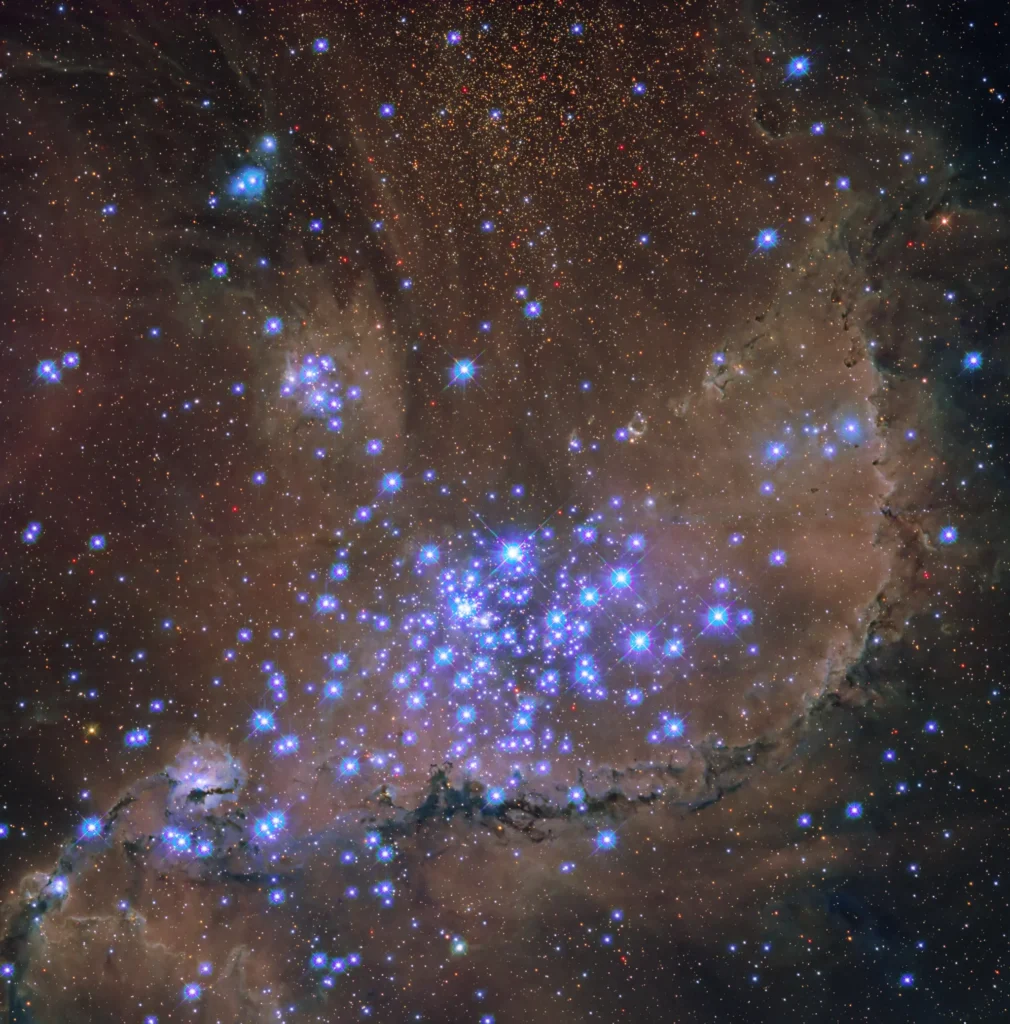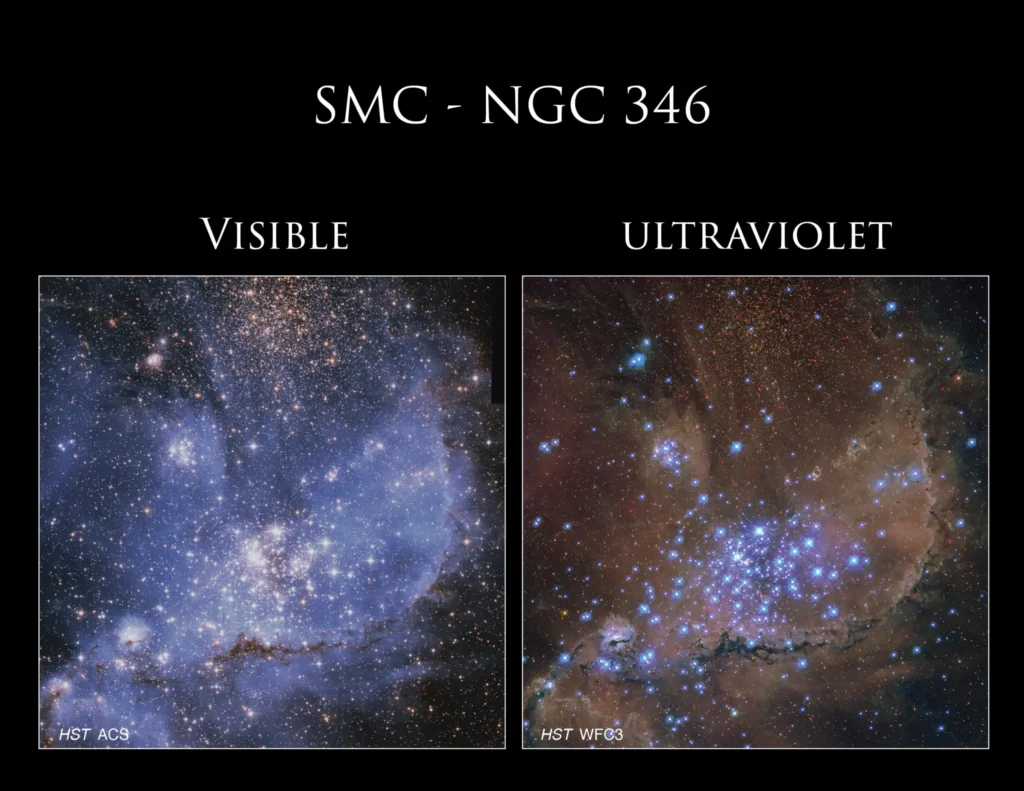NASA has published a new image obtained with the help of the Hubble telescope. It is a unique ultraviolet portrait of a “stellar maternity home” located in a neighboring galaxy.

The region captured in the Hubble photo is inside the Small Magellanic Cloud (SMC). It is a small dwarf galaxy, which is 210 thousand light years away from the Milky Way and is its companion. Astronomers’ calculations show that in a few billion years they will merge together.
Inside the MMO is a star cluster known as NGC 346. It has long attracted the attention of astronomers. The fact is that NGC 346 is home to dozens of hot giant stars. According to estimates, the cluster contains more than half of all known high-mass luminaries in the entire galaxy.
Hubble has observed NGC 346 in the past, but now it has taken an ultraviolet image. This radiation is almost completely blocked by Earth’s atmosphere – and in fact, it helps scientists understand more about the formation and evolution of stars. Hubble, located in space, is now the only telescope capable of sensitive ultraviolet observations (the James Webb can only see in the infrared).

Observations of NGC 346 were made to better understand how star formation shaped the interstellar medium in low-metallicity galaxies. In astronomy, metals are all elements heavier than hydrogen and helium, which initially didn’t exist in the Universe and which were formed already in the process of stellar evolution.
The MMO is noticeably less metallic than the Milky Way. This makes NGC 346 an ideal natural laboratory for astronomers. In the distant past, when our Universe was much younger, most “stellar maternity homes” resembled this nebula. The main difference is that ancient galaxies had thousands of such regions of active star formation.
Previously, we reported on observations of the surrounding NGC 346 nebula made by the James Webb telescope.
According to NASA


